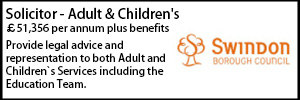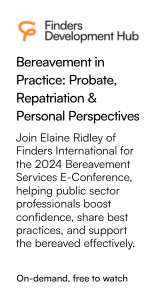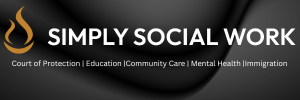Skype in the Court of Protection: The courts in the time of coronavirus
- Details
Nageena Khalique QC and Sophia Roper explain what it was like to take part in a trial concerning withdrawal of life sustaining treatment that was heard by Mr Justice Mostyn with five parties and at least 20 participants over Skype for Business.
In December 2019, Keehan J presided over a directions hearing in a serious medical treatment application brought by a CCG. A dispute had arisen as to whether or not it was in the best interests of A, a man in his 70s who suffered a stroke in 2016, to continue to receive clinically assisted nutrition and hydration (CANH). A’s daughter believes CANH should be removed; his GP thinks it should stay in place. A is not in a prolonged disorder of consciousness: despite significant impairment, he communicates with those caring for him in gestures and occasional words, and enjoys seeing animals and children, and hearing poetry.
In itself, this would be an unusually difficult and sensitive case for the Court of Protection, and Keehan J listed it for four days, including a day of judicial reading time. As preparation progressed, it became clear that it was going to be a tight timetable. Between them, the five parties (CCG, A, represented by the Official Solicitor, A’s daughter, A’s GP, and the local authority) were calling eleven witnesses to give oral evidence, including three independent expert consultants; all five parties would be making closing submissions; and the evidence available to the court ran to well over 4000 pages. What makes this case even more unusual is that the judge listed it to start on Tuesday 17 March 2020, less than 24 hours after the nation was directed to avoid all non-essential contact to stem the rising tide of Covid19.
Mostyn J called an urgent telephone hearing with all the parties on the morning of Tuesday 17 March to discuss whether the hearing could realistically go ahead in Nottingham Civil Justice Centre, and if not, whether conducting the trial remotely was possible. The Judge was diligent but sensitive in his questioning – did anyone have any particular condition which might make this difficult? Who would have to travel using public transport? Did anyone have to use a hotel where self-isolation was not feasible? Did people have to care for elderly or infirm relatives? All the lawyers for all five parties involved were asked to explain their situation and that of the witnesses they were calling, although here the situation was less easy to ascertain at short notice.
Having heard us all, the Judge concluded that it was “unthinkable” that there should be an attended hearing, but was – rightly – determined that the hearing should go ahead, as all the parties were keen to do if possible. He asked the lawyers to find a way of doing so over Skype.
One of the parties’ solicitors, M, set up a Skype for Business meeting which everyone could join via laptop or tablet. A test run was held the same afternoon. Crucially, this included the witnesses, to make sure the evidence could run smoothly. We discovered the sound quality was better if we all wore headphones, and if as many people as possible muted their microphones. Those who could see themselves had a chance to position their screens and identify glitches, such as non-functional links and cameras. Basically, it looked as though we could go ahead. The Press Association was invited to listen in, to ensure transparency, just as if we had been in open court.
By the next morning, glitches ironed out, we were all online and hearing the first witness within an hour of starting. And from there on, with a measure of flexibility and understanding, it felt like pretty plain sailing for the lawyers involved. The ‘meeting’ was kept open all week so we only had to use the same link to join each time. Everyone managed to access the hearing; there was one hiccup, but we changed the order of witnesses so only lost a few minutes. The picture could be varied, so we saw each witness on full screen; at other times the picture showed whoever was speaking – so when the judge spoke we could always see him. Having a group of smaller pictures on a split screen was useful for pre hearing discussion. Twice someone lost signal, but it was immediately spotted by M, the host, so no time was lost. We saw every witness. Additional documents were circulated by email. M managed to upload a video for everyone to watch. Counsel and clients communicated separately by text and email, at times muting the microphone to have a brief chat. The hearing was recorded on Skype (improvements to this were learned daily) and the recordings uploaded to a common sharefile.
With a very slight extension to the court day (starting at 10am and finishing on two days at 5.30pm), we finished in the allotted three days.
Reflecting on the experience, what did we miss? From a legal perspective, nothing that was critical. The terms of the transparency order were dealt with at the outset. Pre-hearing group discussion can be done through Skype by parties joining the meeting earlier than the judge. Using a computer for the hearing meant everyone’s phone was free for the equivalent of notes being passed during examination, or instructions provided from the row behind. Neither the witnesses nor the parties could see the judge except when he spoke, so the conventional advice to watch the judge’s pen could not be given, but he could (and did) say when it was necessary for someone to slow down or pause for him to take a note.
What did we gain? Most importantly, judicial time was not wasted, nor was a sensitive and difficult case adjourned, possibly for months and months, when it was fully prepared for trial and everyone involved anxious to get on with it. No one had to compromise their health; the absence of travel and accommodation saved significant sums of public money. Even with an extended court day, travelling time was saved.
For us as lawyers, it felt comfortable and familiar relatively quickly, though neither of us enjoyed seeing ourselves on screen. We felt witnesses might be less intimidated, as they sat in their homes in casual clothes, but the questioning was still rigorous and challenging, as it should be, particularly when dealing with potentially life and death decisions.
Feedback from witnesses in the days following the hearing was more variable. Lay witnesses who were trying to join by Skype found it stressful. Spotlighting the witness giving evidence meant that the witness did not see the questioner, which they found difficult, and it was harder for both witness and advocate to know when the other person had stopped speaking. Some witnesses felt the external noises inevitable when people were working from their homes with less than 24 hours’ notice were distracting and unhelpful.
Feedback from A’s daughter however gives a very different and important perspective. Her full account, which is reported here reveals how she felt that much was lost with a hearing conducted wholly over Skype. The important gravitas of the court room was absent when court architecture was replaced with the backdrop of the barristers’ and witnesses’ home environment. This didn’t feel to her to reflect the seriousness of the decision being made about her father. To her it felt exclusionary that the pre-hearing chat between lawyers, usually held sotto voce in a huddle in the corner, was now being relayed to all. The judge appeared to her up close and personal, just like anyone else with his face in a little square on the screen. There were times when she became upset but others in the virtual courtroom could not see this and so there was not the opportunity to modify their behaviour, or even have a short break, to avoid causing her unnecessary distress. Perhaps most concerningly she felt she became invisible to the court after giving her witness statement and wondered if she had she missed out on her opportunity to influence the court. A’s daughter’s perspective was that she was left wondering if justice had been denied her father because of the circumstances of the hearing. To her “it felt like a second-best option. It didn’t feel professional. It didn’t feel like justice.”
Lastly, the participation of P, as to which such huge strides have been made in the Court of Protection in recent years, may be more difficult. In A’s case, the restrictions on going into care homes meant that Mostyn J could not visit A as he would have done before the current crisis. The chance for P to attend court and meet the judge privately away from the hearing is hard to replicate, and while some may be able to take part by a video link, supported by carers or IMCAs, for others this will be less feasible.
We are in the early days of remote hearings, and it is still unclear how long we will be in lockdown, so it is too soon to say what the right balance is between ‘business as usual’ and the desirability of postponing some cases for what may be many months. However, if remote hearings are going to work well, they should be as inclusive as possible. The court process itself can be daunting for some litigants (if reassuringly formal for others), and there is always a risk of alienation even when everyone is present in court.
The family courts, and in particular the Court of Protection, have taken huge strides in recent years to ensure that the process is as inclusive and transparent as it can possibly be. It is extremely difficult for family members to appear physically in court where issues of life or death of a mother, father, son or daughter are being discussed. Those difficulties and the risk that they may feel excluded are only increased by the distance of a remote hearing. All those who practise in this field must be aware of that and ensure that all steps are taken to make the proceedings as accessible as possible.
This may well be the way forward for the next few months. If so, we will and must learn as we go along, but we hope this piece, published at the beginning of what may a long haul, will help demystify the process of a remote trial for other practitioners who find the prospect daunting. A degree of flexibility and tolerance will be necessary from everybody if it is to work. The ability to continue taking time sensitive and critically important decisions as to serious medical treatment remains paramount, but it may be that some less urgent cases are simply better being adjourned to enable P’s full participation, or until they can be heard in a court room, as is currently the case for jury trials and inquests.
In the end, however, this could be the practical way forward for many hearings once the pandemic is finally over. COP judges are busy, and COP practitioners often have to wait months for a hearing date, at which an order is made largely by agreement which, with proper attention, could have been secured without recourse to judicial time. There is scope to save public money (which will become a more pressing concern in the future), and improve the working conditions of lawyers provided we get it right and keep at the forefront of our minds the potential drawbacks of the virtual courtroom for the lay participant. It’s good to look for the glimmers of a silver lining in the current dark times, and perhaps this is one.
Nageena Khalique QC and Sophia Roper are barristers at Serjeants’ Inn. Nageena was instructed by the applicant CCG. Sophia, who is Deputy Head of the Serjeants’ Inn Court of Protection Team, was instructed by the Official Solicitor on behalf the respondent, A.
This article first appeared in the New Law Journal.
Current Guidance (this many change):
https://www.judiciary.uk/announcement-type/covid-19/
https://www.mentalcapacitylawandpolicy.org.uk/guidance-on-remote-access-to-the-court-of-protection/
In these unprecedented times the CoP team is available as usual for remote access hearings, mediations, and meetings. Our experience is embedded in the team, from the large number of emergency medical treatment applications which we have conducted by telephone with out of hours judges for many years. As a result, we are well placed to advise as to whether any particular hearing should be conducted remotely, bearing in mind the interests of the client as well as other relevant factors in each case. Our team have significant expertise with remote hearings, mediations and meetings by Skype, Skype for Business, Zoom, MS Teams, and Blue Jeans, and we would be happy to discuss the practicalities and set up in any case.

































